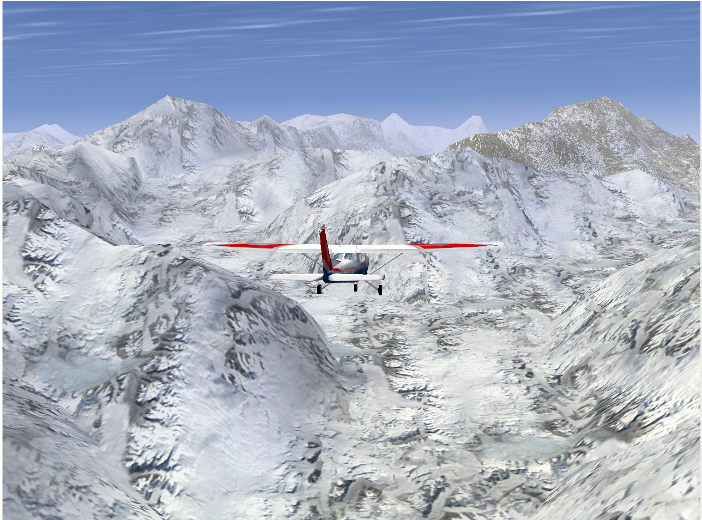- System Requirements
- Environment-Variables:
- Installing FlightGear
- Installing the Scenery
- Installing Aircraft
- Installed Documentation
- Special for WINDOWS and MAC

A C172p within the European
FlightGear-Alps
Looking from above the Grimselsee at 12.000 ft. in direction: Finsteraarhorn, Jungfrau, Mönch, Eiger, Schreckhorn
Looking from above the Grimselsee at 12.000 ft. in direction: Finsteraarhorn, Jungfrau, Mönch, Eiger, Schreckhorn